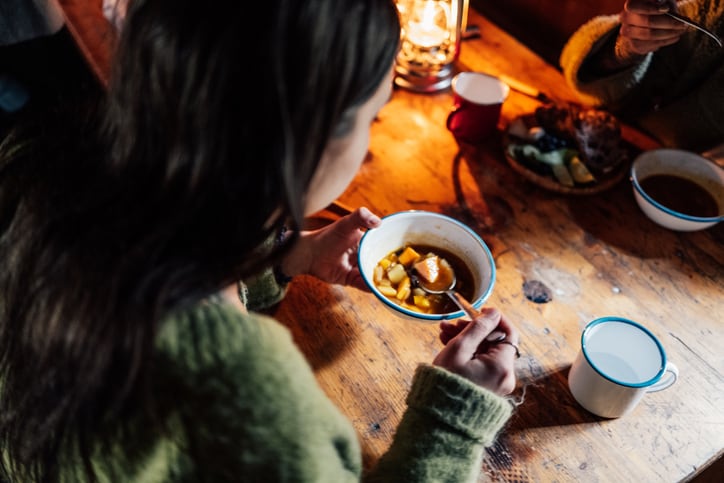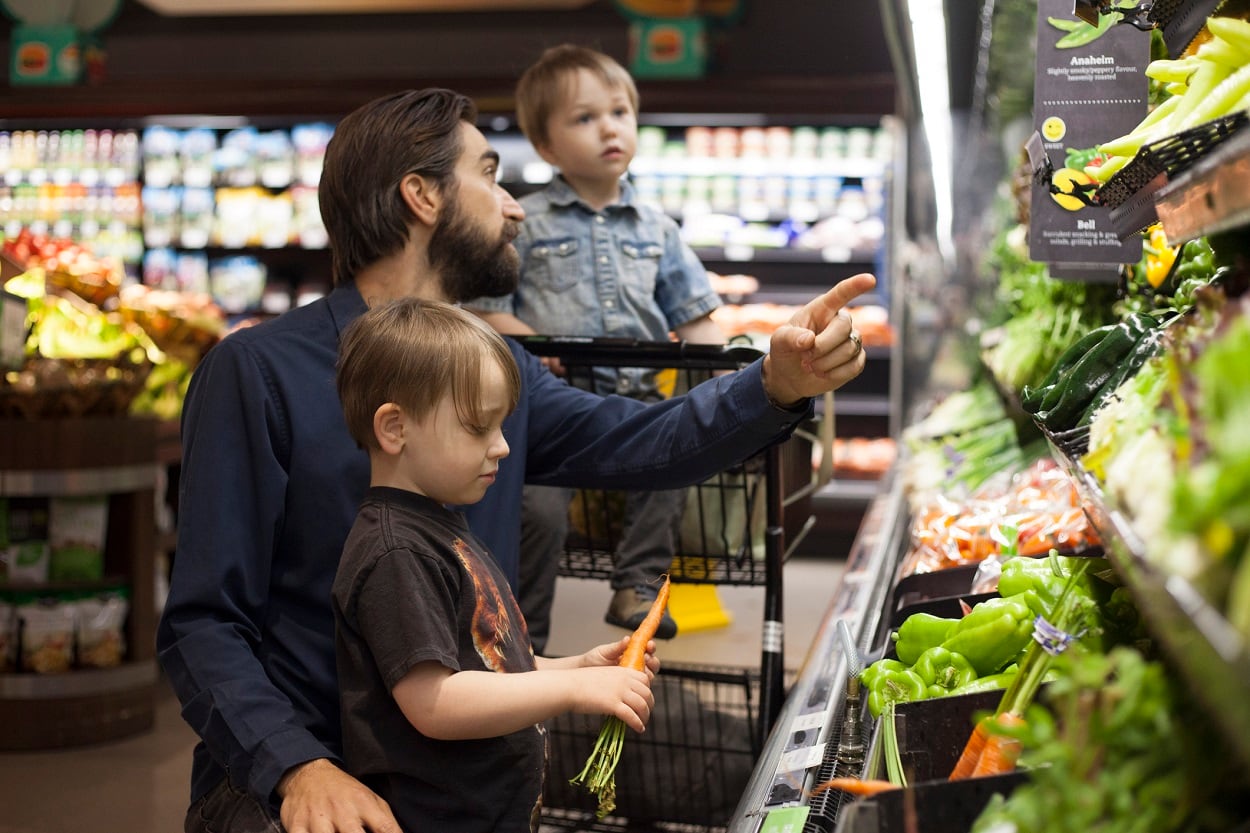The natural channel is often the starting point for many better-for-you CPGs, but to make it big most brands need to break into the conventional, club and convenience channels – a sometimes-treacherous leap that the CEO and Founder of breakfast bar brand Olyra says requires companies to expand their appeal without diluting their core value proposition.
Yannis Ouzounopoulos founded Olyra in 2017 on the “practical wisdom, virtues and holistic life approach of ancient Greeks” as well as the “love and dedication” his family has cultivated for the land and crops over the past five generations as grain millers in Greece.
These values were baked into the company’s USDA organic certified breakfast bars and biscuits made with ancient grains, more fiber and less sugar than leading competitors. They also were proudly displayed in the original line-up of iconic Greek flavors and cultural imagery. And while this helped the brand land shelf space at Sprouts Farmers Markets, the company realized it needed to rebrand from the “inside-out” in order expand appeal and distribution.
In this episode of FoodNavigator-USA’s Soup-To-Nuts podcast, Olyra Founder and CEO Ouzounopoulos shares how he reenvisioned the brand for the mass market while staying true to his roots. This included new flavors and product names, adjusted sensory attributes and reformulation that met consumer demand for cleaner more sustainable food. New packaging and a redesigned website also help make the brand more accessible.
Explore past episodes of Soup-To-Nuts podcast
Never miss an episode of FoodNavigator-USA’s Soup-To-Nuts podcast - subscribe today.
Finding comfort in the chaos: How food will help consumers compe in 2026 – After a year marketed by rising prices, food safety confusion and supply chain fears, ADM predicts consumers in 2026 will gravitate toward nostalgic, sensory-rich foods and beverages that help restore their resilience
Inside Kellanova’s clean room: How a new AI data strategy drove 36% gains for Special K – Kellanova’s pilot offers a blueprint for using data clean rooms to bridge gaps between brands and retailers, unlock deeper shopper insights and rebuild brand value amid inflationary pressure
Gen X steps into spending power: Why marketers cannot overlook the middle generation anymore – After decades of being overshadowed by Boomers and Millennials, Generation X is poised to become the dominant global consumer group and are projected to spend $15.2 trillion 2025 and $23 trillion worldwide in 2035, according to new research from NielsenIQ (NIQ)
Organic industry rallies on Capitol Hil to protect $71B market and fuel growth – Organic Trade Association members championed policies that would expand domestic production, protect against fraud and strengthen the workforce powering the organic industry
5 trends driving specialty cheese sales towards $9.2 billion by 2030 – Friesland Campina, Cypress Grove and The Melting Pot unpack how they balance consumer demand for health, indulgence and value to drive sales of specialty cheese, despite its premium pricing, in a difficult economy
Investors return to CPG, but with caution and only for the right kind of growth – Pitchbook reports a modest rebound in private equity deals in Q1 of 2025, and JPalmer Collective’s Jennifer Palmer sees reasons for optimism for mission-driven brands and women-owned and -led brands. But both warn the current uncertainty is the new norm
Waking up the breakfast bar set
Currently available at thousands of retail stores across the US, including Whole Food, Sprouts, Harris Teeter, Target and others, Olyra is disrupting the $4 billion breakfast bar category, which Ouzounopoulos described as “sleepy” and crowded with large legacy players.
“There are these huge brands like Nature’s Valley or Quaker on the conventional side and on the natural side brands like Nature’s Bakery, but there is very limited innovation in these sets. So, what we are trying to do bring in the set is better-for-you versions of legacy brands,” he explained.
The way Olyra does that is by using minimally processed, wholesome ingredients, including stone milled ancient grains, that deliver taste and nutrition, he added.
For example, Olyra’s breakfast biscuits, which are made with two crunchy cookies that sandwich a creamy filling, have 6 grams of sugar compared to 19 grams in Nature’s Bakery and 12 grams in both Kellogg’s NutriGrain bars and Newtons. The company also packs in substantially more fiber with 11 grams per serving in its biscuits compared to 3 grams in Nature’s Bakery and 1 gram in NutriGrain and Newtons.
The company’s high fiber count helped land it a coveted spot in Whole Foods Market’s recently published 2026 trends forecast, which included a call-out for “focus on fiber.”
While the company’s high fiber and lower sugar appeal to modern consumers, some of the ingredients within the company’s Soft Baked Bites did not – so the company removed palm oil and lupine from these SKUs to offer a cleaner option.
An ‘inside-out’ rebrand
The reformulation was just a small part of a much larger “inside-out” rebrand that also included additional flavors and new imagery to expand the products’ appeal beyond natural shoppers to mainstream consumers.
For example, the original assortment included niche Greek flavors, such as blueberry yogurt, hazelnut carob and fig anise. But the brand secured mass market distribution only after it expanded its selection to include American favorites, such as vanilla crème and apple cinnamon, that quickly became best sellers.
The company also renamed its Fruit + Grain Bites to Soft Baked Bites to expand appeal by playing up the sensory attributes. The change came after consumer research revealed that shoppers associated “chew” with better value – the idea being the more a consumer chews the bigger of a portion – and by extension better value – they feel they are getting.
A new look to attract a new consumer
After revamping the inside to better meet consumers’ needs, the company reimaged its packaging to better grab shoppers’ attention and better balance both what Ouzounopoulos valued when created the products and what consumers want.
He explained that the original packaging was more rustic and “a bit awkward,” which can be good but in this case missed the mark.
The original idea was to use images of Greek heroes to represent the brand’s origins and ancient grains, while also delivering “an emotion of pureness in a world that was full of legends and heroes,” he explained.
“Honestly, I am not sure that goal that I had was delivered the best way because consumers understood the Greek element, but they didn’t understand” the connection to ancient grains and purity, he said.
The new packaging carries some of the same elements, but is “more quirky,” and more clearly explains what the product is, including the flavor, when to eat it and why.
For example, the new design more prominently displays the USDA Organic certification, which is a key call-out for Olyra’s buyers.
Tailor offerings across channels to maximize consumer reach
Many of these changes were rooted in insights gathered in the natural channel and through conversations with mass retailers about their consumers’ needs.
For example, more adventurous and a wider selection of flavors performed better in the natural channel than in mass retailers, like Walmart, where consumers gravitate more to familiar, known flavors.
Price-pack architecture also played a big role in Olyra’s distribution expansion strategy – especially in today’s economy where many consumers are increasingly price sensitive but also willing to pay more of products that they perceive as higher value, such as healthier options.
With this strategy in play, the brand plans to add secondary displays and seasonal offerings within its existing retailers to drive velocity and grow mainly through same store growth over the next year.
As illustrated by Olyra’s branding, pricing and distribution strategies – balancing the needs of consumers and the company is key when scaling. And while it also is one of the biggest challenges many company will face, Olyra’s success shows that consistency and open communication with retailers and consumers are fundamental to long-term success.




